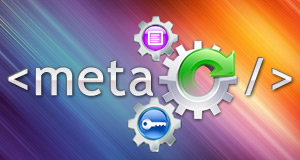
When you approach different translation companies and agencies asking for a quote, you will get a range of prices back – and you may be tempted to simply go with the cheapest.
However, that would be a mistake, as price is not the only factor; it is the processes, workflows and the quality of the translation that are ultimately most important.
This blog post will look at six key aspects of our translation approach that ensure our translations are done to the highest standards of accuracy – and that set us apart from those cheaper companies offering rock-bottom prices.
1. We endeavour to learn about our clients
We ask a lot of questions at the start of a new collaboration. We want to learn about each client’s industry, preferred style and tone of voice. We also ask for examples of any past translations that the client feels did a great job of promoting their brand, as well as any that did not seem to fit, as these make for great reference materials.
Using all these learnings, we put together a “quality pack” which consolidates this information. This quality pack is used to brief all translators who are selected to work on the client’s projects.
We also understand that clients may change their vision from time to time and take a new direction. In these instances, we ask clients to confirm if their reference pack is still up to date and still reflects their brand guidelines. If not, we ask them to update it.
This information is a vital window into a client’s business. It enables our translators to think about which tone, style, wording and voice would best promote the brand. Without these references, the translator will still endeavour to deliver an accurate translation – but it will lack that personal, tailored touch.
2. We tailor the translation workflow to best suit each client’s needs
Where possible, we offer automation and streamlining. However, to this day, I have never found a t-shirt which is truly “one size fits all”. The same goes for translation project workflow.
How we prepare the files, which tools we use and which process we follow is assessed on a project-by-project basis. We look at the true project scope and assess how we can best deliver the requested project.
3. We have over 100 services and can recommend the most suitable ones
We have over 100 translation services and work with quality professionals who deliver translation, review, transcreation, video editing, desktop publishing, engineering services and more – all into almost any language or locale you could ask for.
Quite often, we ask a client if they have any in-country contacts who are intending to review or validate content on their behalf. This is not due to a quality concern with the translation process; it is because you would usually read and re-read the source material, and usually involve a second pair of eyes, before you consider it fit for release to your website or offline purpose. The same attention should be paid to your translated copy to ensure it is highly polished and fit to promote your brand.
Where in-country resources are not available, we are able to offer a review service which enlists a second pair of eyes to read over the translation and ensure it is a quality text.
In addition, many clients have their own design and editing resources. However, they may not have the time or the experience of working with translated material to deliver the final designed copy. This is where we can step in and offer to handle this on your behalf.
4. We work with in-house teams to learn their preferences, take on board their feedback and feed that into the process cycle for continual learning
We understand that despite our best-practice quality processes, we may still encounter feedback from reviewers and other in-country contacts. These contacts tend to be in the best internal position to live and breathe the brand and have the expertise to know exactly how they want to see their localised content and which terminology they prefer. And so, we welcome their feedback where it is available and use it to train our translators to be more in-tune with these preferences.
5. We use translation memories and glossaries
In the majority of instances, we will create a translation memory which is specific to each client and language. A translation memory is effectively a database of past translations broken down into strings of text.
The translation management systems we use are able to make the best use of this database to make suggestions to the translator when they are translating a text which is similar to content which has been seen before or even the same. This process is implemented to provide both effective speed and consistency to translations.
This is also another reason why we welcome feedback; we can use it to update the translation memory and ensure that the suggestions it provides are in-line with the expectations of our clients.
Finally, as a further benefit for clients, we leverage this database every time we receive a new request and where possible, provide discounts to the quotes.
6. We have a hand-picked database of high-quality translators
A vital part of a quality translation is finding a translator who is passionate and knowledgeable about the subject matter, and is also a native speaker of the requested language.
Our translator recruitment process is in place to assess the written quality of each candidate; however, we also look at much more, including the location, education background, years of experience, software knowledge, etc. This knowledge helps us to work with the best translator(s) for each project with a tailored approach.
The process does not stop there, though. We are continually assessing the quality of each translator through quality scoring, feedback, responsiveness, technical knowledge of the current tools and processes used to aid quality translation.
Conclusion
Realistically in the translation world, as the old adage goes, “you get what you pay for”. Whilst there will be companies out there who offer you a lower price than us, you must ask yourself, at what cost? It is vital that you not be seduced by the allure of low prices, as these companies are only able to achieve those costs by compromising on the quality of their processes and, ultimately, the translations they deliver. Our approach involves embedding quality into the translation process itself, as outlined above in the blog post. We work closely with our clients to ensure they receive content which best markets them as if they were creating the content themselves. Our commitment to quality ensures that we have many satisfied clients who are thriving in their international markets – and that, to us, is priceless.
Samantha Brazel
Latest posts by Samantha Brazel (see all)
- An introduction to SEO-localisation - March 23, 2023
- 3 tips for achieving high-quality translations - March 21, 2023
- 3 tips to make website translation more efficient - May 18, 2022





